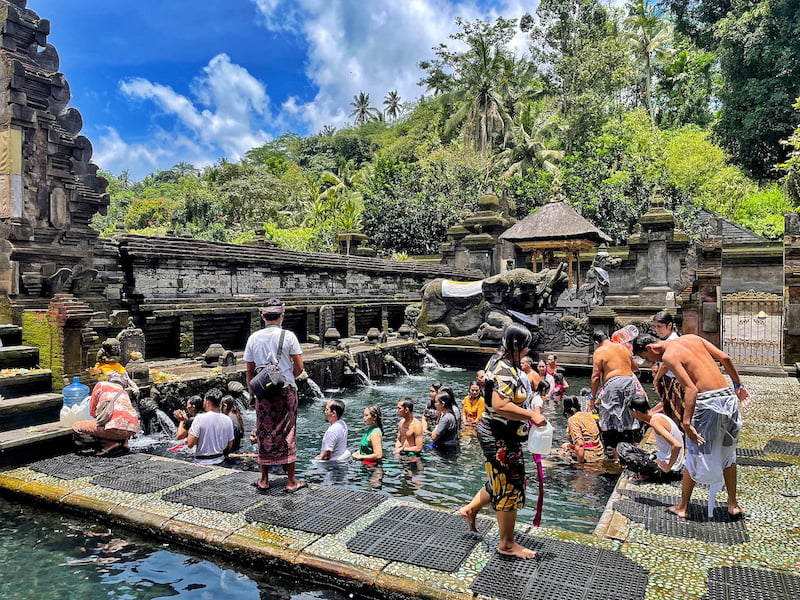
Great Idaho Gateway – Bali, often hailed as the “Island of the Gods,” is renowned not only for its stunning landscapes but also for its rich tapestry of traditions that have been meticulously preserved over centuries. Nestled in the heart of Indonesia, this enchanting island offers a vibrant cultural mosaic that is as mesmerizing as its beaches. To truly appreciate Bali’s uniqueness, one must delve into the island’s diverse traditions and practices that define its Balinese Culture identity.
At the core of Balinese culture is its unique form of Hinduism, which is a harmonious blend of ancient Hindu-Buddhist beliefs and local animistic practices. Unlike the more widely known forms of Hinduism practiced in India, Balinese Hinduism incorporates a pantheon of local deities and spirits, reflecting a deep reverence for nature and ancestors. This spiritual framework is not just a religious practice but a guiding force in the daily lives of the Balinese people.
Daily rituals and offerings, known as canang sari, are a quintessential part of Balinese life. These colorful, intricately arranged offerings, made from palm leaves and filled with flowers, rice, and other symbolic items, are placed in various locations—temples, family shrines, and even on the streets. They are a form of gratitude and a way to maintain harmony between the spiritual and physical realms.
Bali’s calendar is filled with a dazzling array of festivals and ceremonies that showcase its cultural richness. One of the most spectacular events is Nyepi, the Balinese Day of Silence. Observed as the Balinese New Year, Nyepi is a day of complete silence, fasting, and meditation. The preceding day features vibrant Ogoh-Ogoh parades, where enormous, grotesque effigies representing evil spirits are paraded through the streets before being burned. This ritual symbolizes the cleansing of the island of malevolent forces.
Another significant festival is Galungan, which celebrates the victory of dharma (cosmic order) over adharma (chaos). It is marked by elaborate temple ceremonies, traditional dance performances, and intricate offerings. The festival is a time for families to come together, pay homage to their ancestors, and celebrate the richness of their cultural heritage.
“Top 5 Indonesian Handicrafts That Are Making Waves Internationally”
The artistic traditions of Bali are renowned for their vibrancy and complexity. Balinese dance, characterized by its intricate movements, expressive gestures, and elaborate costumes, is a vital part of the island’s cultural expression. One of the most famous forms is the Legong, a classical dance performed by young girls in intricate, gold-studded costumes. It narrates stories from ancient epics with movements that are both graceful and highly stylized.
Music plays an equally important role, with the gamelan orchestra being the backbone of Balinese musical tradition. Gamelan ensembles consist of various percussion instruments, including metallophones, gongs, and drums. The music, often performed during ceremonies and dance performances, is noted for its complex rhythms and interlocking patterns. Each gamelan composition is unique to the specific ensemble, with its own set of musical rules and traditions.
Balinese craftsmanship is another reflection of the island’s cultural depth. Traditional arts such as wood carving, weaving, and painting are not merely artisanal pursuits. But are deeply intertwined with spiritual and ceremonial practices. Intricately carved wooden statues and masks, often depicting deities and mythical creatures, are integral to various ceremonies and cultural expressions
Balinese cuisine is a delightful reflection of the island’s cultural fusion. It is characterized by its use of aromatic spices, fresh herbs, and distinctive techniques. Dishes like babi guling (suckling pig), bebek betutu (slow-cooked duck), and sate lilit (minced meat satay) are not just culinary delights but are often prepared for special occasions and ceremonial feasts. The flavors are bold and layered, with an emphasis on balancing sweet, salty, and spicy elements.
In the face of rapid modernization and global influences. Bali faces the challenge of preserving its cultural heritage while adapting to contemporary changes. Many Balinese communities are actively involved in maintaining their traditional practices and educating younger generations about their cultural significance. Tourism also plays a crucial role, both as a means of cultural exchange and as a potential threat. Efforts are being made to promote responsible tourism that respects and supports local traditions.
“The Complete Information From Wikipedia About Balinese Culture”